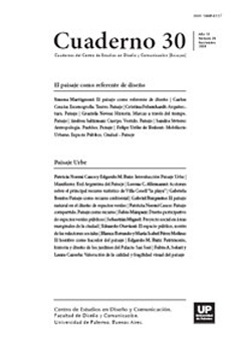Diseño participativo de espacios verdes públicos
Abstract
To develop participating design processes is not a merely willful matter. It must be framed in concrete methods
and define clearly the reaches of the wished participation. The effective participating methods are those that establish
mass media between governors and governed and between the own neighbours. A participating process must inclusive
and opened, fomenting tolerance and respect. The participating methodology allows to establish also a pedagogical frame
where participants were able to assume that public space is one for all. For that reason accurate communication channels
must be settle down, in order to allow a dialogue between participants and tools to be able to establish agreements. The
cohesion of the neighbours with the landscapers, offers an added value to fortify that creative fact that it is going to constitute a new urban landscape. Neighbours are fundamental partners for landscape professionals to overturn their technical
knowledge and creativity towards a coherent and functional project to build a democratic society. This design characterizes by a technical treatment of interdisciplinary way and by the real participation of users and neighbours of those spaces;
that is to say, by an involvement that points at the decision making and citizen control.
References
Fuentealba V; Dascal, G; Segovia, O y Abogabir, X. (2000). ¡Manos a la obra! Guía para la gestión participativa de espacios públicos. Santiago: La Puerta Abierta.
Kullock, David (Comp.). (1993). Ciudad - Planificación participativa y hábitat popular. Buenos Aires: FADU - UBA.
Fernández, Roberto. (2000). La ciudad verde. Teoría de la gestión ambiental urbana. Buenos Aires: Espacio.
Villamayor, C y Lamas, E. (1998). Gestión de la radio comunitaria y ciudadana. Quito: FES - AMARC.
Gehl, J. (2006). La humanización del espacio urbano. Barcelona: Reverte.
Augé, M. (2002). Los no lugares. Espacios del anonimato. Barcelona: Gedisa. (Versión original 1992).
Lynch, K. (1998). La imagen de la ciudad (3 ed.). Barcelona: Gustavo Gilli. (Versión original 1960).
Los autores/as que publiquen en esta revista ceden los derechos de autor y de publicación a "Cuadernos del Centro de Estudios de Diseño y Comunicación", Aceptando el registro de su trabajo bajo una licencia de atribución de Creative Commons, que permite a terceros utilizar lo publicado siempre que de el crédito pertinente a los autores y a esta revista.


